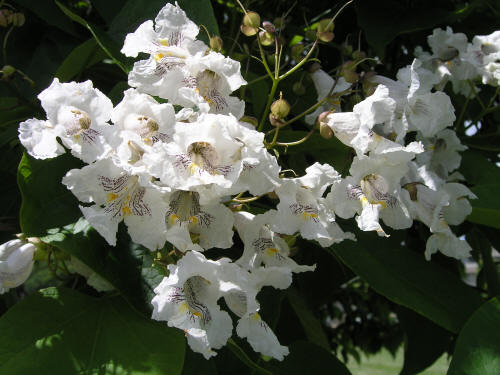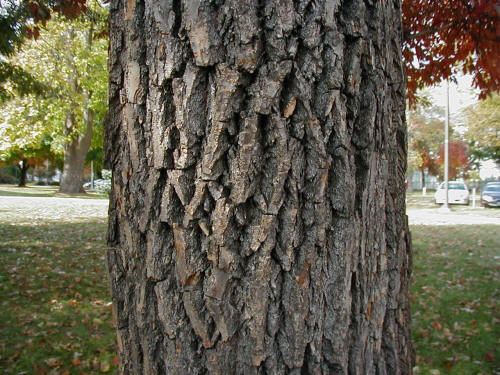Northern Catalpa
Northern Catalpa
Catalpa speciosa
Bignoniaceae (Crossvine Family)
▲ ▼ large trees on Missouri State University campus in flower
▲ Springfield, MO flowering tree

▲ ▼ flowers

▲ large leaves
▲ pod-like fruit

▲ mature tree bark
▲ ▼ trees weathered Springfield ice storm of 2007 pretty well
Location on campus: south of Siceluff Hall, southwest corner of Hill Hall (young tree), retention center southwest of Lot 24
Catalpa speciosa: Northern Catalpa
- leaves opposite or in whorls of three, deciduous, simple, chordate with entire margins; leaves large 6-12" long and 3-8" wide; light to medium green in color and glabrous above and pubescent underneath
- stems stout and reddish to yellow brown with large lenticels and solid white pith
- bark is gray-brown and furrowed or scaly with age
- grows 40-60' tall and about 2/3 as wide usually in upright oval or irregular crown shape
- flowers are large, white in terminal panicles in late spring; fruit is a long capsule 1-1.5' long that persists into winter
- prefers full sun to part shade and moist, well-drained fertile soil, although fairly soil adaptable
- medium to fast growth rate; wood is fairly weak
- native to Missouri
Other Catalpa relatives:
- Catalpa bignonioides: Southern Catalpa
- similar to northern catalpa, but leaves smaller, with pubescent veins and bad odor when crushed
- flowers similar, fruit pod is more slender and shorter
- a cultivar ‘Nana’ is grafted to form a “lollypop" shaped tree
- Catalpa ovata: Chinese Catalpa
- leaves are smaller, sometimes with 3 teeth on margins and fruit is longer but thinner than northern catalpa
- Paulownia tomentosa: Royal Paulownia, Empress Tree, Princess Tree
- leaves are like northern catalpa, but opposite, very pubescent underneath and with strong odor, otherwise similar to northern catalpa
- flowers are purple in terminal panicles, opening before leaves emerge in early spring
- very fast growing, can be a weedy tree in some areas